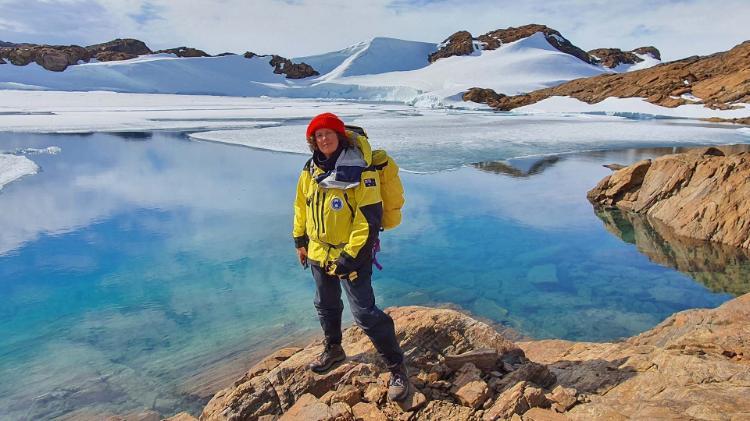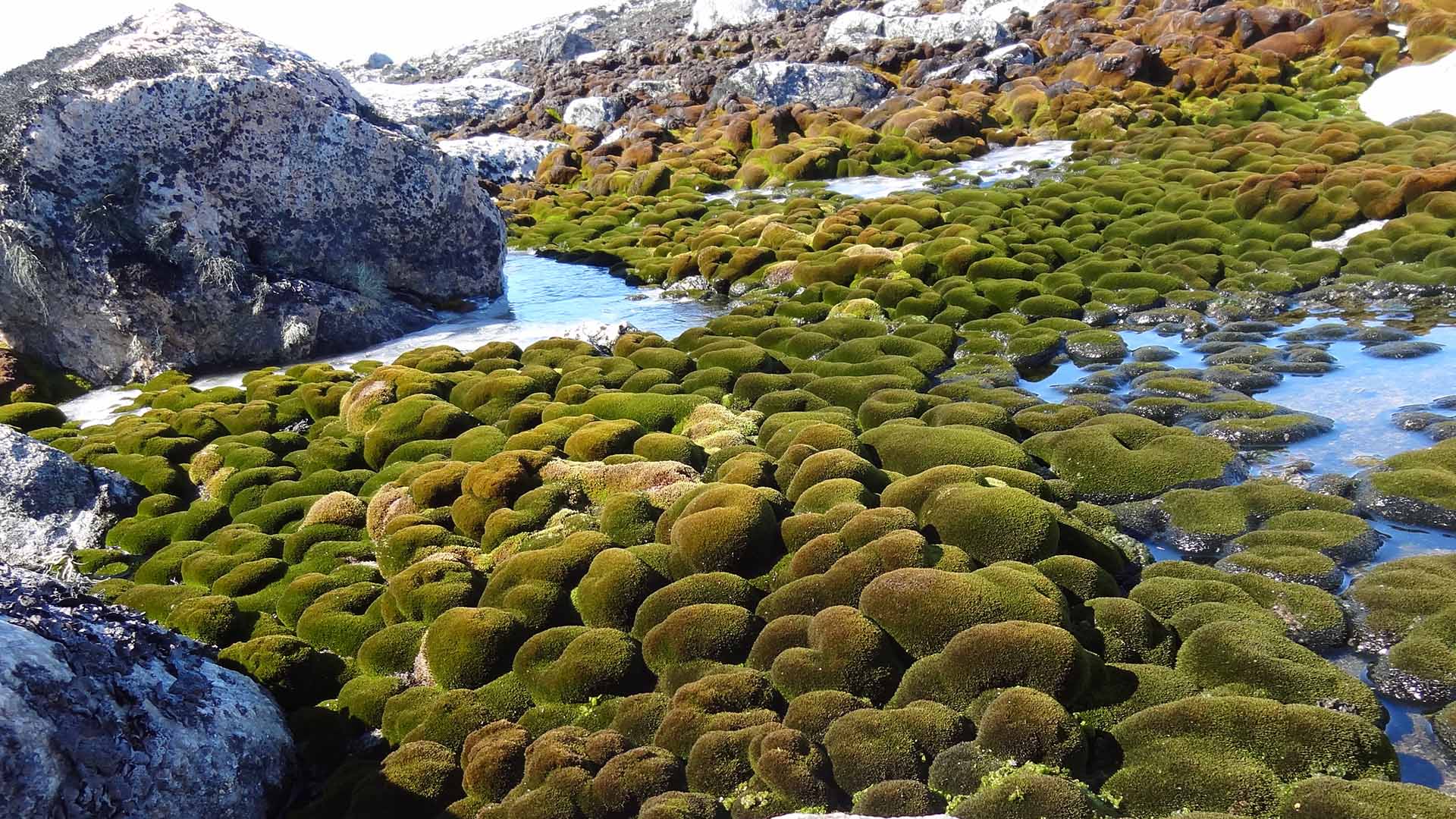March 31, 2020
Antarctica’s summer of extreme heat
Scientists record first reported heatwave at Antarctica’s Casey research station.
This summer, while drought, heatwaves and bushfires ravaged Australia, Antarctica was also experiencing a summer of extreme weather.
In East Antarctica, scientists recorded the first reported heatwave event at Casey research station in the Australian Antarctic Territory, with extreme maximum and minimum temperatures recorded over three consecutive days in January. Record high temperatures were also reported at bases on the Antarctic Peninsula.
In a research paper published today (31 March 2020) in Global Change Biology, scientists from the University of Wollongong (UOW), Australian Antarctic Division (AAD), University of Tasmania and University of Santiago, Chile, report on the heatwave and its impact on Antarctica’s plants, animals and ecosystems.
While the Antarctic Peninsula has experienced rapid warming over the past decades, until now East Antarctica has been mostly spared from warming associated with global climate change.
UOW climate change biologist Senior Professor Sharon Robinson, the paper’s lead author, said between 23 and 26 January this year, Casey recorded its highest ever minimum and maximum temperatures.
“Heatwaves are classified as three consecutive days with both extreme maximum and minimum temperatures,” Professor Robinson said.
“In those three days in January, Casey experienced minimum temperatures above zero and maximum temperatures above 7.5°C, with its highest maximum temperature ever, 9.2°C on 24 January, followed by its highest minimum of 2.5°C the following morning.”
“In the 31 year record for Casey, this maximum is 6.9°C higher than the mean maximum temperature for the station, while the minimum is 0.2°C higher.”

Senior Professor Sharon Robinson in the lab. Picture: Paul Jones, UOW
Elsewhere in Antarctica record temperatures were also reported in February.
On 6 February, the Argentine research base Esperanza on the northern tip of the Antarctic Peninsula recorded a maximum temperature of 18.4°C. At the time it was the highest temperature recorded anywhere in Antarctica, almost 1°C hotter than the previous record of 17.5°C.
Three days later the new record was broken when Brazilian scientists reported a maximum temperature of 20.75°C at Marambio Base, also on the Antarctic Peninsula.
The February average daily temperature exceeded the long-term means by 2°C for Esperanza, and 2.4°C for Marambio.
Antarctic ecologist Dr Dana Bergstrom, Principle Research Scientist at the AAD and Visiting Scholar at UOW, said the hot summer would most likely lead to long-term disruption to local populations, communities, and the broader ecosystem. This disruption could be both positive and negative.
“Most life exists in small ice-free oases in Antarctica, and largely depends on melting snow and ice for their water supply,” Dr Bergstrom said.
“Melt water flooding can provide additional water to these desert ecosystems, leading to increased growth and reproduction of mosses, lichens, microbes and invertebrates.
“However excessive flooding can dislodge plants and alter the composition of communities of invertebrates and microbial mats.
“If the ice melts completely, early in the season, then ecosystems will suffer drought for the rest of the season.”
Higher temperatures can also cause heat stress in plants and animals adapted to cold Antarctic conditions.
Dr Bergstrom said further studies were needed to understand the full impact of the heatwave.
“Extreme events often have impacts for years after the event. Long-term study of areas affected by the heatwave will allow us to track this impact,” she said.

Antarctic ecologist Dr Dana Bergstrom in Antarctica.
AAD atmospheric scientist Dr Andrew Klekociuk said the warmer temperatures were linked to above average temperatures across parts of Antarctica, and other meteorological patterns in the Southern Hemisphere that occurred during the spring and summer of 2019.
These patterns were influenced in part by the early breakup of the ozone hole in late 2019, due to rapid warming in the stratosphere – the atmospheric region above 12 km altitude.
“The upper levels of the atmosphere at the edge of Antarctica were strongly disturbed in the spring of 2019, and effects of this likely further influenced the lower atmosphere over Antarctica during the summer,” Dr Klekociuk said.
Professor Robinson said extreme events associated with global climate change are predicted to increase in frequency and impact, and Antarctica was not immune to them.
“The extreme weather experienced in Antarctica over its summer months illustrates how changing extremes are impacting even the most remote areas of the planet,” she said.
ABOUT THE RESEARCH
‘The 2019/2020 summer of Antarctic heatwaves’ by Sharon A. Robinson, Andrew R. Klekociuk, Diana H. King, Marisol Pizarro Rojas, Gustavo E. Zúñiga and Dana M. Bergstrom is published in the 31 March issue of Global Change Biology (DOI: 10.1111/GCB.15083).
Fieldwork in Antarctica was supported by the Australian Antarctic Division and the Instituto Antártico Chileno (INACH). The research received funding from the Australian Research Council, the Australian Antarctic Science Program, INACH and the University of Wollongong’s Global Challenges Program.
